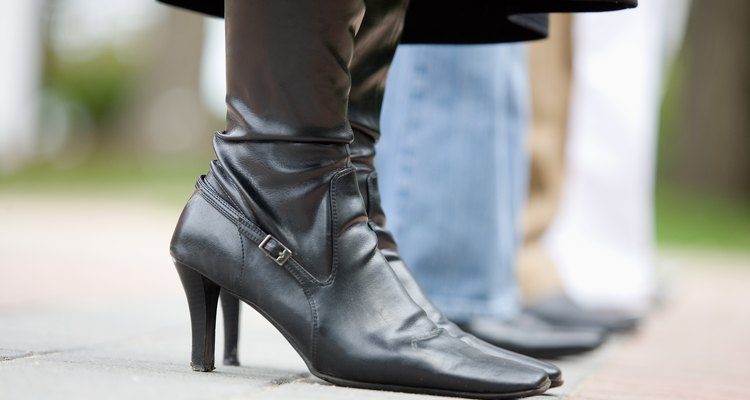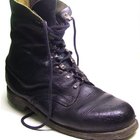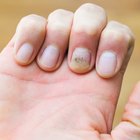
Jupiterimages/Photos.com/Getty Images
When the heel comes off of your boot, your first instinct might be to chuck the boots entirely. Instead, try reattaching the heel with a few specialty tools available at your local shoe repair. If you don’t already own things like shoe glue, shoe nails and a tack hammer, they’ll come in handy for future shoe repairs and small household craft projects.
Buff the heel’s broken surface with 200-grit sandpaper. You want to create an even surface for the glue to stick to, without taking away much of the heel’s raw material.
Buff the point of attachment on the shoe body, with the sandpaper.
Clean the exteriors of the heel and shoe before reattaching them; you won’t want to apply the pressure of cleaning on a newly attached heel. Apply cleaner or polish with a damp cloth, then wipe off.
Check for shoe nails that are still attached to the body of the shoe. If their points are sticking out, coat them with glue. If none of the shoe nails is still in place, coat the heads of new shoe nails with shoe glue and press them up into the body of the shoe, filling the holes left by the old nails. Coat their tips with glue.
Cover the heel and the point of attachment with shoe glue. Use a small paintbrush to make sure the whole surface is coated well.
Press the heel into the body of the shoe. Make sure it’s aligned in its original position.
Hold the heel in place for two to three minutes, applying constant, gentle pressure to the heel and body of the shoe.
Use a clean rag to wipe away any excess glue.
Allow the glue to set according to the instructions on the label, then test the heel’s strength by pulling it lightly.
Reinforce a still-wobbly heel by hammering additional shoe nails into the heel from the sole. Make sure that the nail heads lay flat against the footbed; if you can’t get them to lay entirely flat, cover them with an insole cushion to protect your foot.
Related Articles

How to Keep My Shoes From Sliding While ...

How to Replace Rubber on Heels

How to Change the Batteries in Kids' ...

How to Fix a Melted Shoe Sole

How to Replace the Sole on Wolverine ...

How to Glue Soles on Cheap Work Boots

How to Fix Squeaky Leather Boots

How to Repair Boots With Uneven Wear on ...

How to Round Your Nails

How to Repair Shoe Heels After a Dog ...

How to Fix a Crack in My Hunter Wellies

How to Glue a Leather Shoe Strap

How to Clean Airwalk Ugg-Style Boots

What Happens to Leather Shoes When ...

How Do I Get Yellow Stains Out of My ...

How to Glue a Heel Strap

How to Install Ugg Insoles

How to Care for Patent Leather Shoes

How to Fix Nicks in Shoe Toes

How to Reinforce Your Shoes
Writer Bio
Jenni Wiltz's fiction has been published in "The Portland Review," "Sacramento News & Review" and "The Copperfield Review." She has a bachelor's degree in English and history from the University of California, Davis and is working on a master's degree in English at Sacramento State. She has worked as a grant coordinator, senior editor and advertising copywriter and has been a professional writer since 2003.
Photo Credits
Jupiterimages/Photos.com/Getty Images